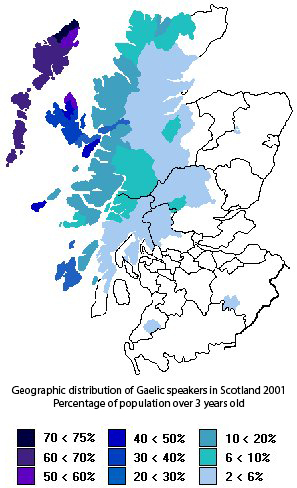Gaelic in Argyll and The Isles
Within the Episcopal Church, there is a Society which promotes the use of Gaelic in its Liturgies. It is called the Gaelic Society of the Scottish Episcopal Church (Comunn Gaidhlig Na h-Eaglais Easbaigich) and its aims are:
- To consolidate and develop the use of the Gaelic language in the Liturgies of the Scottish Episcopal Church in Gaelic-speaking areas and elsewhere.
- To promote a wider awareness of the place of Gaelic in the history and traditions of the Scottish Episcopal Church, both within the Highland area and further afield.
- To use the media to promote worship in Gaelic in accordance with the rites of the Scottish Episcopal Church.
Click here to read about the Scots language: www.scotslanguage.com
The Gaelic language in the churches of the Western Isles
The Gaelic Language (Scotland) Act 2005
The Gaelic Language (Scotland) Act 2005 received Royal Assent on the 1st June 2005. Enshrined in the Act is the aspiration that Gaelic should enjoy equal respect with the English language in Scotland.
The Diocese of Argyll and The Isles encompasses parts, or all, of the three District Councils initially chosen to spearhead the implementation of the Act – Argyll and Bute Council, The Highland Council and Western Isles Council. These Councils have all drawn up Language Plans to take forward this requirement.
Is Gaelic just for native speakers?
No. Many people from all over Britain and abroad are interested in keeping the Gaelic language alive. The Scottish Episcopal Church is often labelled the “English Church”, because of the many English people who find a natural cultural home in it, and one of the most important contributors to Gaelic education was an Englishman, Edward Dwelly, (1864-1939). He was born in southern England, near Arundel and he became interested in Gaelic when he was stationed in Scotland with the British Army. He compiled a Gaelic Dictionary, published in 1911, which is still in use today. For his efforts, he was awarded a civil pension by King Edward VII. One of Scotland’s most loved Gaelic singers, George Clavey (1928-2003), began his musical development as a choirboy in St Peter’s Episcopal Church, Edinburgh. Although a learner, he became fluent in the language, winning the Mod Gold Medal in 1960.
Can the Scottish Episcopal Church be part of helping to keep the language alive?
Yes. The repetitive nature of the Liturgy lends itself very well to learners using the language in that context.
Can Gaelic and English be used together in the Liturgy?
Yes. St Luke’s account of the Day of Pentecost reminds us that different languages can exist together quite comfortably in a state of spiritual recognition.

